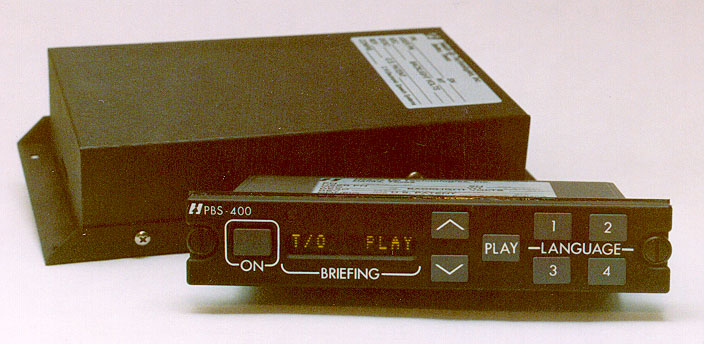
|
I provided the complete hardware and firmware designs for these Heads Up Technologies transportation-industry products in 1991 and subsequently. Among the things I provided were:

In one of those wacky coincidences that sometimes occur, at the very instant the aviation-industry PBS-400 product was entering its final debugging phase, we at Heads Up Technologies were approached by a company that had an immediate need for a device with these identical hardware characteristics, but for a very different use in a very different industry. Thus, rather than introducing a single product, we were able to quickly introduce two products in two industries, simply by replacement of firmware and support software.Luminator (www.luminatorusa.com) was a company specializing in the manufacture and sale of "flip-dot" signs for buses. These are the large signs on the front, rear, and sides of buses which display the route numbers and the destinations. Indeed, I've been told that Luminator possessed about 90% of the American market for such signs at that time. However, because of the ADA ("Americans with Disabilities Act"), it was becoming increasingly necessary in the public-transportation industry to provide audio indications of routes and destinations, rather than merely visual indications -- which, of course, are useless to blind passengers.
The idea, therefore, was to create a device (the Luminator Voice Annunciator, or LVA) which upon opening the doors of the bus, could provide audio annunciations of the names of the routes to potential passengers on the curb. Heads Up Technologies was to manufacture these devices, and sell them to Luminator. Luminator would resell the devices to transportation authorities, and would appear to be their manufacturer. I needed merely to provide the firmware for the unit, and a primitive MS-DOS based development system which could be used to enter "scripts" of route-names into a PC, and to compile these scripts into binary formats containing audio data suitable for inclusion in the units themselves. Thousands of LVA units were manufactured (and continue to be manufactured), and were installed across the country. For example, they are installed in the buses of Columbus, Ohio, my home town.
As mentioned, an LVA unit merely announces names of routes. Eventually, though, the need for a more-sophisticated system known as a "next stop" system arose, the LVA-NS. The LVA-NS unit incorporates all of the functionality of an LVA unit, but adds the additional capability of announcing, within the bus, the name of the next stop the bus is going to make. In other words, outside the bus it announces the name of the route upon opening the door, and inside the bus it announces the name of the next stop upon closing the door. Again, I needed merely to provide firmware and MS-DOS based support software to accomplish this, while retaining the identical PBS-400 hardware.
Finally, an enhanced version of the LVA-NS was created, and called the LVA-GPS. The LVA-GPS uses substantially the same firmware as the LVA-NS, but adds the useful capability of using GPS (the Global Positioning System) to keep track of the physical location of the bus. This allows it to make next-stop annunciations based on physical proximity to the bus-stop, rather than merely announcing the stops in a pre-determined sequence. Unfortunately, though I completed prototype development of the LVA-GPS, it never went into production. In the meantime, Luminator had developed their own GPS-based next-stop system, less expensive to Luminator and more expensive to the customer, and hence felt no need for our unit. Luminator's own system has, over the course of time, largely supplanted my LVA and LVA-NS. However, I did contribute certain sub-components to Luminator's system. (See the IVA product, for example.)